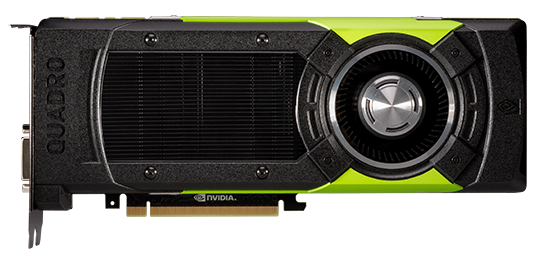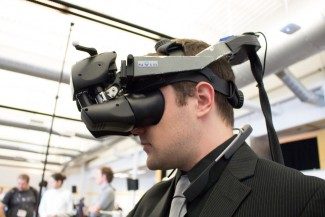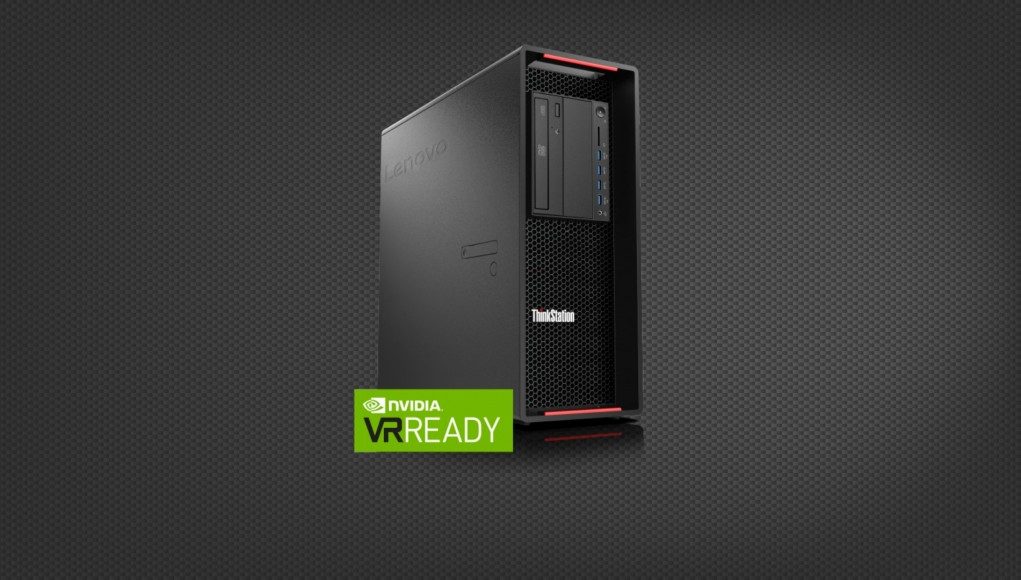Lenovo revealed at the Nvidia GPU Technology Conference (GTC) their new line of Nvidia certified VR Ready computers, the company’s next step in VR dedicated hardware. And if you’re thinking of getting your hands on the new line of ThinkStations—the P910, P710, and P510—you better have some serious cash on hand.
Lenovo is touting three new ThinkStation systems focusing on enterprise virtual reality. “By selecting a VR Ready configuration, you can rest assured, you will receive the highest performing VR experience,” the company writes.
See Also: How to Tell if Your PC is VR Ready
And we’d certainly hope so; the company’s top of the line, the ThinkStation P910, is packing dual 24 GB Nvidia Quadro M6000s, a workstation GPU that Newegg lists for $5,000 a piece. We’re not taking the other components lightly either, with the recently announced Intel Xeon E5-2637 v4 ($996) and a hefty 32GB DDR4 RAM minimum to top it off.
 Although there aren’t any official prices posted for any of their new ThinkStations, Lenovo’s new lineup for VR-ready computers is clearly targeting a professional userbase across a number of hypothetical industries just getting into virtual reality. Professionals in healthcare, product design, automotive design, architecture and engineering are all among the top priorities of Lenovo’s new VR-ready systems, and the company has recently teamed up with enterprise-facing VR team WorldViz to make it a reality.
Although there aren’t any official prices posted for any of their new ThinkStations, Lenovo’s new lineup for VR-ready computers is clearly targeting a professional userbase across a number of hypothetical industries just getting into virtual reality. Professionals in healthcare, product design, automotive design, architecture and engineering are all among the top priorities of Lenovo’s new VR-ready systems, and the company has recently teamed up with enterprise-facing VR team WorldViz to make it a reality.

At GTC 2016 this week, WorldViz is demoing their Co-Presence VR Experience on Lenovo hardware using the Oculus Rift and HTC Vive headsets. WorldViz has been creating shared VR experiences targeted at professional users since 2002, including several prototypes such as a DK1-era room-scale setup using tracked input devices, and CAVE systems for shared exploration. The company recently raised an investment from Intel in light of the growth of consumer VR.
If you’re wondering what the new Lenovo VR-ready systems are packing under the hood (like you’ll ever get your hands on one) we’ve put the basic specs down below.
VR-Ready Lenovo ThinkStations
ThinkStation P910
- 2x NVIDIA Quadro M6000 with 24GB VRAM
- 32GB DDR4 minimum memory
- Intel Xeon E5-2637 v4 (3.5Ghz)
- Windows 10 Pro 64-bit
ThinkStation P710
- NVIDIA Quadro M6000 with 24GB VRAM
- 16GB DDR4 minimum memory
- Intel Xeon E5-2637 v4 (3.5Ghz)
- Windows 10 Pro 64-bit
ThinkStation P510
- NVIDIA Quadro M5000 with 8GB VRAM
- 16GB DDR4 minimum memory
- Intel Xeon E5-1630 v3 (3.7Ghz)
- Windows 10 Pro 64-bit
Component Breakdown
NVIDIA QUADRO M6000 24GB (P910/P710)
- 3072 CUDA Parallel-Processing Cores
- 24 GB GDDR5
- Max Power Consumption 250 W
- PCI Express 3.0 x16
- DP 1.2 (4), DVI-I (1), Optional Stereo (1)
- Form Factor 4.4″ H x 10.5″ L Dual Slot
NVIDIA QUADRO M5000 8GB (P510)
- 2048 CUDA Parallel-Processing Cores
- 8 GB GDDR5
- Max Power Consumption 150 W
- PCI Express 3.0 x16
- DP 1.2 (4), DVI-I (1), Optional Stereo (1)
- Form Factor 4.4″ H x 10.5″ L Dual Slot
Intel Xeon E5-2637 v4 (P910/P710)
- 3.5 GHz
- 15 MB LLLC Cache
- 135 W Quadcore
- 9.6 GT/s QPI Link Speed
- DDR4 1600/1866/2133/2400
Intel Xeon E5-1630 v3 (P510)
- 3.7 GHz
- 10 MB Intel Smart Cache
- 140 W Quadcore
- No QPI Links
- DDR4 1333/1600/1866/2133







